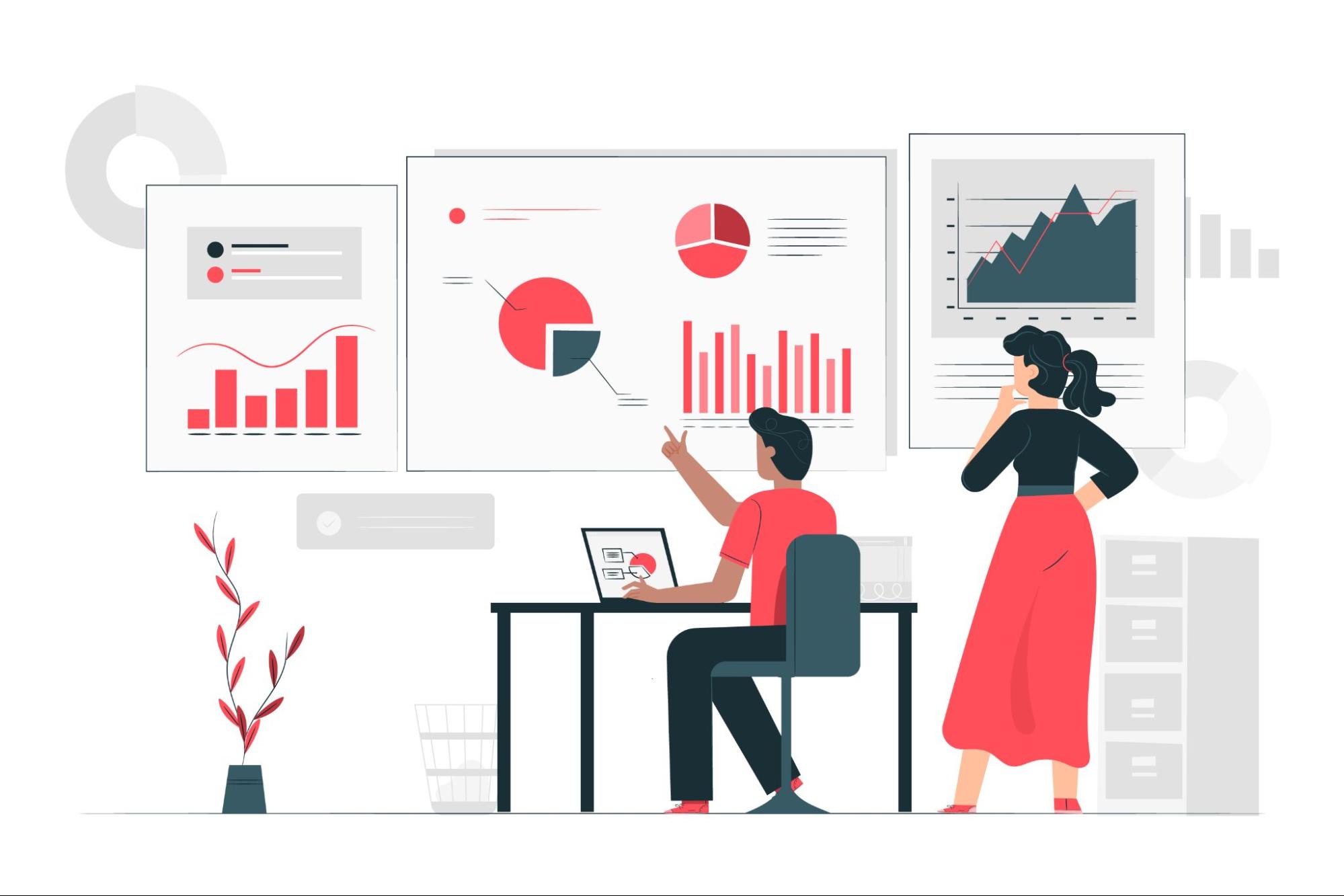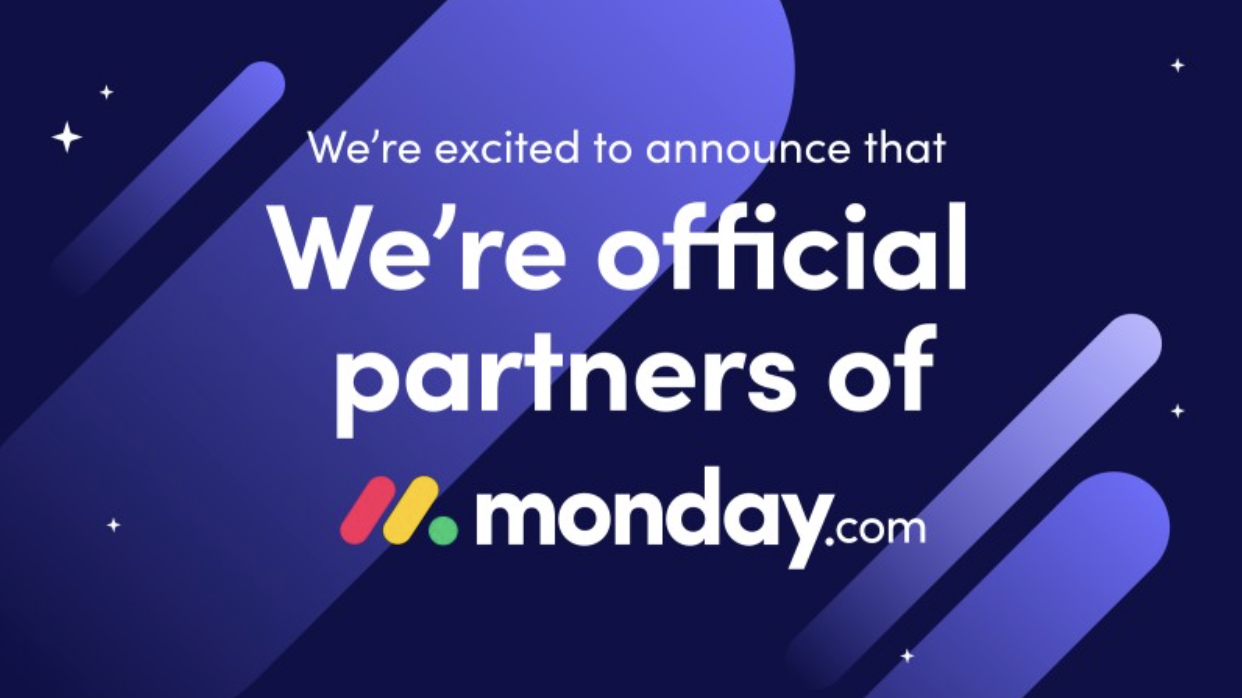Crafting an efficient project roadmap is a cornerstone of successful project management. Savvy project managers understand that a well-designed roadmap serves as a powerful tool to swiftly align stakeholders and executives with project objectives. While delving into granular details and refining strategies to the minute tasks is crucial, the presentation of the project overview holds immense significance.
In this guide, we'll equip you with the essential knowledge to create an effective project roadmap. We'll cover its definition, optimal usage, and practical steps for crafting one using monday.com’s project roadmap tools.
What is a roadmap in project management?

A project roadmap is a concise, one-page visual representation that outlines high-level goals and deliverables across a timeline. It serves as a valuable instrument for managing stakeholder expectations while effectively communicating project objectives and timelines to various teams.
Armed with a roadmap, both you and your stakeholders gain clarity on the project's scope and potential challenges to anticipate. By presenting a clear and comprehensive overview, a well-crafted roadmap for project management becomes a guiding beacon, steering the project towards success.
What should a project roadmap include?
A project management roadmap serves as a strategic blueprint, offering a concise overview of the essential components of a project. It should encompass key elements such as project objectives, milestones, deliverables, resources, and a timeline, providing stakeholders with a clear understanding of the project's direction and progress. Here's a detailed breakdown of what a roadmap for project management should include:
-
Objectives: Clearly articulate the project's goals and success criteria. Answer questions such as "What is the purpose of this project?" and "What defines success?"
-
Milestones: Identify significant events or achievements within the project timeline. Milestones serve as markers for progress and critical delivery dates.
-
Deliverables: Outline all tangible or intangible outputs produced within the project scope at each phase. This includes reports, products, services, or other outcomes.
-
Resources: Include estimates or actual costs of labour and materials required to execute the project successfully. This may encompass human resources, technology, equipment, or any other necessary resources.
-
Project Timeline: Provide a high-level overview of when project initiatives will commence and conclude. While detailed day-to-day activities are not necessary, a timeline, often depicted on a Gantt chart, offers a visual representation of project progression.
-
Dependencies: Highlight any dependencies or relationships between tasks or activities that may impact the execution of essential deliverables. This ensures that potential bottlenecks or constraints are identified and addressed proactively.
-
Key Contacts: Specify team members involved in the project and their contact information. This will facilitate communication and collaboration among team members throughout the project lifecycle.
Tip: If specific dates for early project stages are unavailable, utilize placeholders such as the number of weeks or months instead. Tools like the monday.com Project Portfolio Management Template can assist in creating and presenting roadmaps effectively, even with evolving timelines.
What is the difference between a roadmap and a plan?

Distinguishing between a project management roadmap and a project plan is crucial for effective project management. While both serve as essential tools for guiding project execution, they differ significantly in terms of scope and detail.
A project roadmap provides a high-level strategic overview of the project, focusing on the "why," "who," and "when." It outlines key objectives, milestones, deliverables, resources, and timelines, offering stakeholders a clear understanding of the project's direction and progress.
On the other hand, a project plan delves into the granular details of project execution, addressing the "how." It encompasses specific tasks, timelines, dependencies, resources, and potential risks, providing a comprehensive blueprint for executing the project efficiently.
Within monday.com Work OS, both roadmaps and plans can be customised to meet each project's unique needs. While the roadmap emphasises strategic objectives and timelines, the project plan dives deeper into task management, client approval processes, risk mitigation strategies, project phases, and team assignments.
For instance, our Single Project Template comprehensively covers finer details such as individual tasks, client approval workflows, identification of potential issues and risks, project phases, and team assignments. These details are essential for effective project execution but are typically not included in the high-level overview provided by the roadmap.
When should you use a project roadmap?
Knowing when to utilize a project management roadmap is crucial for effective communication and project management. Here's a breakdown of when a project roadmap is most beneficial:
Quickly Conveying Important Information
A project roadmap is perfect for swiftly communicating essential details, such as project goals, to stakeholders. It offers a concise overview without overwhelming them with intricate details, making it ideal for executives and other stakeholders who require a broad understanding of the project's scope and objectives.
Early Project Stages
During a project's initial phases, when all the details have yet to be finalised, a roadmap serves as a valuable planning tool. It helps outline the general direction and strategy of the project, providing a framework for further development and decision-making.
Improving Organization and Collaboration
Utilising a roadmap for project management can enhance organisation and collaboration within the project team. By providing a visual representation of the project's goals and timelines, it fosters alignment and clarity among team members, enabling them to work more effectively towards common objectives.
Keeping Executives and Stakeholders Informed
Roadmaps are particularly useful for keeping executives and stakeholders informed about the project's progress and direction. They offer a high-level view of the project's trajectory, allowing stakeholders to stay engaged and supportive without getting bogged down in minutiae.
However, it's important to recognize that a project roadmap may not be suitable for keeping the project team updated on day-to-day activities and details once the project is underway. For team members deeply involved in project execution, tools like Daily Task Trackers are more appropriate. They provide the necessary granularity and focus on specific tasks and timelines.
How to create a successful project roadmap?

Creating a successful project roadmap involves several key steps to ensure clarity, alignment, and effective communication with stakeholders. Here's a comprehensive guide on how to create a successful project roadmap:
Write a Business Case
Begin by drafting a business case to outline the project's purpose, benefits, costs, and risks. This high-level analysis helps justify the project's undertaking and gain buy-in and approval from stakeholders.
Write a Project Charter
Once the business case is approved, develop a project charter. This document outlines key project details such as milestones, deliverables, stakeholders, assumptions, schedule overview, and resource allocation.
Start with a Template
Utilise a project roadmap template to save time and ensure consistency in your roadmaps. Refer to existing templates or create your own to suit the specific needs of your project.
Input Essential Project Information
Fill your project roadmap with vital project data, including goals/objectives, potential risks, benefits, or ROI, a high-level timeline, workstreams for each team, high-level activities, and defined project milestones.
Collaborate with Stakeholders
As you build the roadmap, seek guidance and input from key stakeholders. Their insights can help fill in gaps and ensure alignment with project goals. Share the roadmap with stakeholders for feedback and buy-in.
Update Regularly
Projects evolve over time, so it's essential to update the roadmap to reflect changes in timelines, resources, milestones, and dependencies. To streamline updates and ensure accuracy, utilise project management features such as project approvals, planning, portfolio management, and document creation within monday.com Work OS.
Here are a few project management features included in monday.com Work OS:
monday.com Work OS incorporates several robust project management features designed to streamline workflow processes and enhance collaboration. Here's an overview of these key features:
-
Project Approvals: Teams can utilise standardised forms to gather essential information for project proposals and work requests, ensuring a streamlined approval process. Automation and status updates within the platform expedite approval cycles, enabling teams to move projects forward swiftly.
-
Project Planning: Team members can assign project owners and contributors, fostering accountability and clarity regarding task responsibilities. Clear deadlines can be established for individual tasks, facilitating effective time management and progress tracking. The platform allows teams to manage various project aspects such as scope, budget, milestones, dependencies, stakeholders, and more at any project phase.
-
Portfolio Management: Teams gain insights into the overarching project landscape by consolidating data from multiple projects across different programs into a centralised Dashboard View. Instantly connecting budgets, timelines, actual costs, risks, and progress enables teams to identify bottlenecks and trends, fostering informed decision-making.
-
Document Creation: monday workdocs facilitates efficient document creation within the platform, allowing users to generate documents directly from their workspace. Users can incorporate various content types, such as text, images, boards, and dashboards, into their documents, enhancing flexibility and customization options.
Get your project roadmap up and running with monday.com Work OS

Roadmapping serves as a pivotal stage in assessing your current position, defining future objectives, and charting the course to success. It's not just about where you're headed but also about how you'll navigate the journey. A well-crafted roadmap is indispensable for securing client buy-in and engaging stakeholders effectively.
To ensure the success of your project roadmap, it's essential to prioritise flexibility, visual clarity, and seamless sharing. And what better way to achieve this than by leveraging project management software like RMsis by Optimizory and monday.com?
With monday.com Work OS, you can seamlessly translate your project roadmap vision into reality:
-
Flexibility: monday.com empowers you to effortlessly adapt your roadmap to changing circumstances. Whether you're navigating shifting priorities or responding to unexpected challenges, monday.com provides the flexibility you need to keep your roadmap agile and responsive.
-
Visual Clarity: Transform complex project data into compelling visual representations with monday.com's intuitive interface and powerful visualisation tools. From dynamic Gantt charts to interactive timelines, monday.com helps you communicate your roadmap with clarity and impact.
-
Seamless Sharing: Use monday.com's collaboration features to effortlessly share your project roadmap with stakeholders. Whether you're collaborating with clients, team members, or external partners, monday.com ensures that everyone stays informed and aligned throughout the project journey.
-
Comprehensive Project Management: Beyond roadmapping, monday.com offers a comprehensive suite of project management features to support every aspect of your project. From task tracking and resource allocation to budget management and risk assessment, monday.com provides the tools you need to drive project success.
Don't let your project roadmap languish in obscurity. Elevate it with monday.com Work OS and unlock its full potential. Try monday.com today and experience the difference for yourself.





